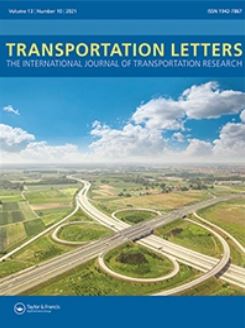
High-capacity Connected and Autonomous Vehicles (CAVs) are expected to be extensively utilized by on-demand services. This paper aims to assess the impacts of large-scale autonomous on-demand mobility services on traffic, environment, and road safety, under various service specifications using microsimulation. To that end, an urban on-demand shuttle service was designed, optimized, based on a variation of the Dial-a-Ride optimization problem (DARP), and implemented in the road network of the city of Athens to serve different portions of demand with various capacity specifications. It was then investigated through forty mobility scenarios, with differences in policy implementation and market penetration rate of CAVs. Findings show that it led to improved network level traffic conditions, as delays decreased, and that traffic impacts evolve with fleet capacity and served demand. Furthermore, the number of conflicts decreased and the environmental conditions significantly improved, with CAVs in the network, while the traveled distance increased.
| ID | pj205 |
| DOI | |
| Tags | impact assessment, statistical modelling, traffic automation, traffic simulation |







